Brazilian Rainbow Boa | Buy Brazilian rainbow boa | Best 5
$549.99
Brazilian Rainbow Boa | Brazilian rainbow boa for sale | Buy Brazilian rainbow boas | Rainbow Boa for sale | where to buy Brazilian rainbow boa
Brazilian Rainbow Boa: A Comprehensive Care Guide
The brazilian rainbow boa for sale* (Epicrates cenchria) is one of the most strikingly beautiful snakes in the reptile world. Famous for its iridescent scales that shimmer like a rainbow in the light, this snake is a popular choice for reptile enthusiasts, and it lives up to its name both in appearance and reputation. Native to the rainforests of South America, these boas are renowned for their docile nature, stunning appearance, and manageable size. Whether you’re looking to add a *baby Brazilian rainbow boa* to your collection or already have an *adult Brazilian rainbow boa*, it’s essential to know how to care for these snakes properly.
Appearance and Size
Brazilian Rainbow Boas are immediately recognizable by their shimmering scales, which reflect light to create a rainbow-like effect. This iridescence is caused by microscopic ridges on their scales, which break up light and produce the vivid, rainbow hues that give the snake its name. The base color of the snake is typically reddish-brown or orange with black rings or spots running down its back.
When it comes to size, Brazilian Rainbow Boas are considered medium-sized snakes. *Adult Brazilian rainbow boas* generally grow to about 5 to 7 feet long, with females being larger than males. *Baby Brazilian rainbow boas* are typically around 12 to 18 inches at birth and grow steadily with proper care. These boas have a slender body compared to other boa species, which makes them easier to handle and less intimidating to those new to snakes.
Natural Habitat
In the wild, the *Brazilian rainbow boa* is native to the humid rainforests of South America, particularly in Brazil, where it spends its time both on the ground and in the trees. These snakes thrive in warm, humid environments, which mimic their natural rainforest habitat. Because of their arboreal tendencies, Brazilian Rainbow Boas enjoy climbing, so it’s crucial to provide ample opportunity for this in their enclosure.
Brazilian Rainbow Boa Enclosure Setup
When considering purchasing a *Brazilian rainbow boa for sale*, it’s important to know how to properly set up their enclosure to mimic their natural environment. These snakes require a carefully controlled environment to ensure their health and happiness.
Enclosure Size
For *baby Brazilian rainbow boas, a smaller enclosure is suitable, such as a 10 to 20-gallon terrarium. As they grow, they will need more space. **Adult Brazilian rainbow boas* will require an enclosure that is at least 36 inches long, 18 inches wide, and 18 inches tall. For larger adults, a 4x2x2 foot enclosure is ideal, especially if you want to give them enough room to climb and explore.
Temperature and Heating
Brazilian Rainbow Boas are native to warm, tropical environments, so it’s crucial to maintain appropriate temperatures in their enclosure. The ambient temperature should be kept between 75-80°F (24-27°C), with a basking spot of around 85-90°F (29-32°C). Use an under-tank heater or heat lamp to create a temperature gradient, allowing the snake to move between warmer and cooler areas as needed.
Ensure that the heat source is regulated with a thermostat to prevent overheating. In addition, it’s important to monitor the temperatures regularly with a thermometer placed on both the hot and cool sides of the enclosure.
Humidity
Perhaps the most critical aspect of keeping a *Brazilian rainbow boa* healthy is maintaining the right humidity level. These snakes require a humidity level of 75-80%, which mimics the humid environment of their rainforest home. Without adequate humidity, they can develop shedding problems or respiratory issues.
To achieve this humidity, mist the enclosure regularly, and use a hygrometer to keep track of the humidity levels. Including a large water dish in the enclosure will also help raise humidity, and it provides a place for the snake to soak when it needs to.
Substrate
The substrate (bedding) in your *Brazilian rainbow boa’s* enclosure should be able to retain moisture to help maintain the humidity levels. Ideal substrate options include cypress mulch, coconut fiber, or sphagnum moss. Avoid using substrates like sand or gravel, as these can dry out the enclosure and cause health problems for the snake.
The substrate should be deep enough to allow the boa to burrow slightly, as this is a natural behavior for them in the wild.
Hides and Climbing Structures
Brazilian Rainbow Boas appreciate having plenty of places to hide. Providing hides on both the warm and cool sides of the enclosure will give your snake a sense of security. You can use commercially available snake hides or create your own using non-toxic materials.
Additionally, as these snakes are semi-arboreal, providing climbing branches or logs is essential. This will allow them to engage in their natural climbing behaviors, which can help reduce stress and provide enrichment.
Diet and Feeding
The diet of a *Brazilian rainbow boa* consists primarily of rodents, such as mice and rats, in captivity. The size of the prey should be proportionate to the size of the snake.
– *Baby Brazilian rainbow boas* can be fed appropriately sized pinky or fuzzy mice once every 5-7 days.
– *Adult Brazilian rainbow boas* should be fed larger prey, such as rats, every 10-14 days.
It’s important to only feed your snake pre-killed or frozen-thawed prey. Feeding live prey can result in injuries to your snake, as live rodents may bite and harm them.
Make sure to provide fresh water at all times. A large water bowl that the snake can soak in is ideal, as Brazilian Rainbow Boas enjoy soaking and this helps with hydration and shedding.
Handling and Temperament
*Brazilian rainbow boas* are known for their generally calm and docile temperament, especially when they are handled regularly and properly. That being said, *baby Brazilian rainbow boas* can sometimes be a bit nippy or defensive. However, with consistent handling and positive interactions, they tend to calm down as they grow older.
When handling your boa, always be gentle and support its body fully. It’s best to start with short handling sessions of about 10-15 minutes and gradually increase the time as your snake becomes more accustomed to being handled.
It’s important to note that you should avoid handling your snake for at least 48 hours after feeding to prevent regurgitation. Additionally, always wash your hands before and after handling your snake to avoid transferring any harmful bacteria.
Brazilian Rainbow Boa Lifespan
When cared for properly, *Brazilian rainbow boas* can live for 20-30 years in captivity. This long lifespan means that owning one of these snakes is a long-term commitment, so potential owners should be prepared for the responsibility.
Buying a Brazilian Rainbow Boa
If you’re looking for a *Brazilian rainbow boa for sale*, it’s essential to do your research and buy from a reputable breeder. A healthy boa will have clear eyes, a well-rounded body, and smooth, iridescent scales. Always ask the breeder about the snake’s health history, feeding habits, and any other relevant information.
When purchasing a *baby Brazilian rainbow boa*, make sure it has been feeding consistently and is in good health. Breeders should be able to provide information on the snake’s genetics, lineage, and age.
Brazilian Rainbow Boa Price
The *Brazilian rainbow boa price* can vary depending on factors such as age, color, and breeder reputation. Generally, *baby Brazilian rainbow boas* are more affordable than adults, with prices ranging from $150 to $500. However, certain morphs or boas from particularly reputable breeders can command higher prices.
*Adult Brazilian rainbow boas* tend to be more expensive, with prices ranging from $300 to $1,000 or more, depending on their size, age, and condition.
When considering the price, remember that the initial cost of the snake is just one part of the investment. You’ll also need to budget for their enclosure, heating, lighting, and ongoing care.
Conclusion
The *Brazilian rainbow boa* is truly a stunning and rewarding snake to care for. With its iridescent scales, manageable size, and docile temperament, it’s no wonder that this species has become a popular choice among reptile enthusiasts.
Whether you’re looking to purchase a *baby Brazilian rainbow boa* or an *adult Brazilian rainbow boa*, it’s crucial to provide them with the proper environment, diet, and care to ensure they thrive in captivity. By maintaining appropriate humidity, temperature, and enclosure conditions, you can enjoy a healthy, happy boa for decades to come.
If you’re considering adding a *Brazilian rainbow boa* to your collection, make sure to research reputable breeders and ask plenty of questions to ensure you’re getting a healthy, captive-bred snake. The effort you put into creating a proper setup and care routine will be well worth it when you see your rainbow boa’s iridescent scales shimmering in the light.
So, whether you’re looking for a *Brazilian rainbow boa for sale* or you’re simply curious about these incredible snakes, they make a fantastic addition to any reptile enthusiast’s collection.
The Brazilian Rainbow Boa is not only a visually stunning snake but also one that brings years of companionship and intrigue to those who choose to care for it. Let’s further explore some aspects of their care, behavior, and other important factors to consider if you’re interested in purchasing one.
Health and Common Issues
Like all reptiles, Brazilian Rainbow Boas can be prone to certain health issues, especially if their environment isn’t maintained properly. To keep your snake in optimal health, it’s important to be aware of potential issues and how to prevent or treat them.
Respiratory Infections
Brazilian Rainbow Boas are particularly susceptible to respiratory infections, especially if the humidity in their enclosure is too low or if the temperature fluctuates frequently. Signs of a respiratory infection include wheezing, nasal discharge, open-mouth breathing, or lethargy. If you notice any of these symptoms, it’s essential to consult a reptile veterinarian immediately. Maintaining consistent humidity and temperature levels will help prevent these issues.
Shedding Problems (Dysecdysis)
Due to their reliance on high humidity, Brazilian Rainbow Boas can experience shedding problems if their enclosure is too dry. A healthy snake will shed its skin in one complete piece. If your boa is shedding in patches or has retained skin around its eyes or tail, it may indicate that the humidity in its enclosure is too low. Soaking your boa in lukewarm water or misting the enclosure more frequently can help resolve these issues.
Parasitic Infections
Like many snakes, Brazilian Rainbow Boas can be prone to internal and external parasites. Mites are a common external parasite that can cause discomfort and health issues for your boa. To prevent mites, always quarantine new animals before introducing them to your collection and maintain proper hygiene in your snake’s enclosure.
Internal parasites can also be a concern, especially if your boa eats live prey. Regular fecal tests by a veterinarian can help detect and treat internal parasites.
Mouth Rot (Stomatitis)
Mouth rot is an infection of the mouth tissue that can occur if a snake’s environment is unsanitary or if it suffers from stress. Symptoms include swelling around the mouth, pus, or difficulty eating. If left untreated, mouth rot can become serious, so it’s important to seek veterinary care at the first sign of trouble. Maintaining a clean enclosure and feeding your boa properly can help prevent this issue.
Breeding Brazilian Rainbow Boas
For those interested in breeding *Brazilian rainbow boas*, it’s important to understand the specific needs of this species when it comes to reproduction. Brazilian Rainbow Boas are live-bearers, which means they give birth to live young rather than laying eggs.
Breeding Setup and Timing
Brazilian Rainbow Boas typically breed in the winter months, as the cooler temperatures mimic their natural environment. To encourage breeding, you’ll need to introduce a cooling period in the enclosure, reducing the temperature by about 5-10°F for several weeks before gradually warming it back up. The males will often court the females during this period, which involves rubbing, tail-wrapping, and other behaviors.
Once mating has occurred, gestation typically lasts between 4 and 6 months, depending on the temperature and the individual snake. A healthy female will give birth to a litter of between 10 to 25 live young.
Caring for Baby Brazilian Rainbow Boas
After birth, *baby Brazilian rainbow boas* should be housed individually to prevent stress and ensure they are feeding well. Babies will typically begin feeding on pinky mice shortly after their first shed, which usually occurs about a week after birth.
As with adult boas, it’s important to maintain high humidity in the baby boas’ enclosures to ensure proper shedding and growth. Regular handling from a young age can help make baby boas more docile and accustomed to human interaction.
Is a Brazilian Rainbow Boa Right for You?
If you’re considering purchasing a *Brazilian rainbow boa for sale*, it’s important to evaluate whether this species is the right fit for your lifestyle and level of experience. While they are relatively easy to care for compared to some other snake species, they do have specific needs, especially regarding humidity.
Pros of Owning a Brazilian Rainbow Boa:
1. *Stunning Appearance*: Their iridescent scales are breathtaking, making them one of the most visually appealing snake species available.
2. *Manageable Size*: While they grow to a decent size, they are not too large to handle comfortably.
3. *Calm Temperament*: With regular handling, Brazilian Rainbow Boas are known to be quite docile, making them a good choice for intermediate reptile keepers.
Cons of Owning a Brazilian Rainbow Boa:
1. *Humidity Requirements*: Their need for high humidity can be a challenge to maintain, especially in dry climates.
2. *Initial Cost: While not the most expensive snake on the market, **Brazilian rainbow boas* can still be a significant investment, particularly if you purchase a high-quality specimen.
3. *Lifespan Commitment*: With a lifespan of 20-30 years, owning a Brazilian Rainbow Boa is a long-term commitment that requires ongoing care and attention.
Where to Buy Brazilian Rainbow Boas
When searching for a *Brazilian rainbow boa for sale*, it’s crucial to buy from a reputable breeder or supplier. Many breeders specialize in producing high-quality, captive-bred boas, which are healthier and better adapted to life in captivity than wild-caught specimens.
Captive-bred boas are typically more accustomed to human interaction and are less likely to carry parasites or other health issues. Reputable breeders will also be able to provide information on the snake’s lineage, health history, and feeding habits.
If you’re looking for a *baby Brazilian rainbow boa, breeders often sell these snakes shortly after they’ve had a few successful feedings and sheds. **Adult Brazilian rainbow boas* are also sometimes available for sale, though they may be more expensive due to their size and established care routines.
Conclusion
The *Brazilian rainbow boa* is an extraordinary reptile that brings both beauty and a calm temperament to any collection. With its shimmering, iridescent scales and manageable size, this species is a favorite among reptile enthusiasts. However, they do require specific care, particularly regarding humidity and enclosure setup.
If you’re thinking of buying a *Brazilian rainbow boa, it’s important to ensure that you can meet their needs in terms of temperature, humidity, and space. Whether you’re purchasing a **baby Brazilian rainbow boa* or an *adult Brazilian rainbow boa*, investing time in research and preparation will result in a healthy, thriving snake.
As with any pet, owning a Brazilian Rainbow Boa is a long-term commitment. With proper care, they can live for 20-30 years, providing you with many years of companionship. If you’re ready for the responsibility, a Brazilian Rainbow Boa can make a rewarding and visually stunning addition to your reptile family.
Always make sure to purchase your snake from a reputable breeder and create a well-maintained, clean, and enriching environment for your new pet. Whether you’re searching for a *Brazilian rainbow boa for sale* or just learning more about this fascinating species, they are an incredible snake to behold and care for.



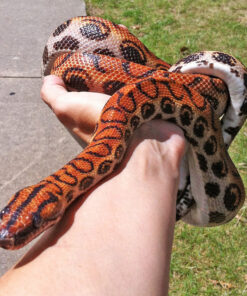
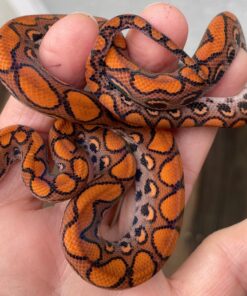



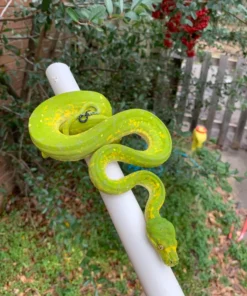
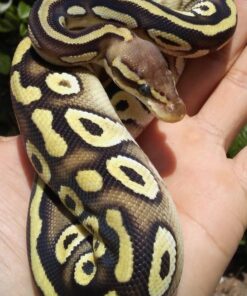
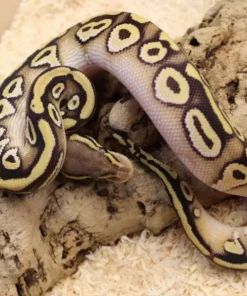
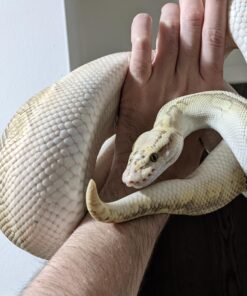




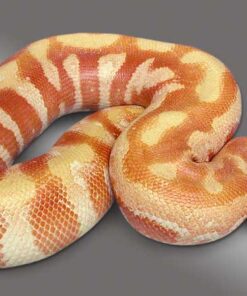
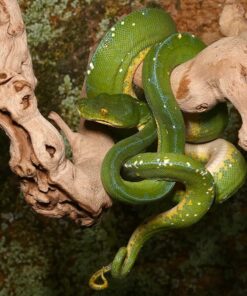
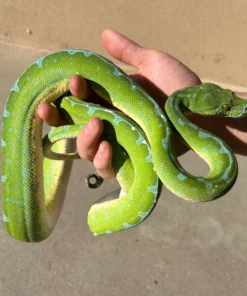
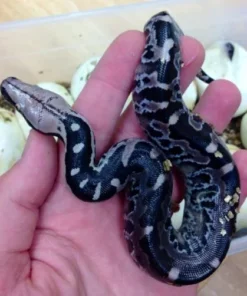

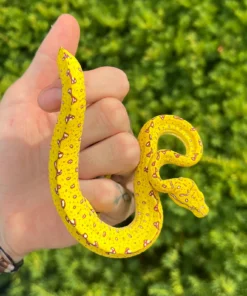

Reviews
There are no reviews yet.